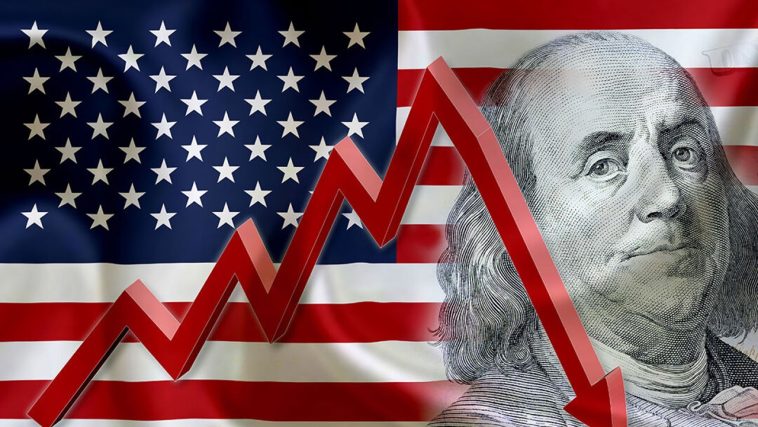As the nation grapples with the impact of the president’s economic agenda, some concerning trends are emerging. An economic indicator that has not been witnessed since the Great Depression of the 1930s has resurfaced, raising alarms.
It is vital for the White House and Congress to act swiftly and address the surge in government spending that is fueling inflation. By learning from history, we can prevent a potentially catastrophic crisis on the horizon.
In 2020, amidst the pandemic-induced government lockdowns, President Donald Trump and the Democratic-led Congress injected substantial amounts of money into the economy to stabilize it. While this was crucial at the time, the consequence of financing this spending with debt and money printing has become evident.
These unprecedented measures were endorsed by the Federal Reserve, which kept interest rates extraordinarily low despite economists’ concerns about future inflation.
At the beginning of President Biden’s term, there was hope that the economic crisis brought on by the pandemic would soon dissipate. Vaccines were developed, and states started reopening their economies, indicating a path to recovery.
However, rather than restoring spending to normal levels, President Biden and congressional Democrats, along with the support of the Federal Reserve, chose to maintain high government expenditures.
This decision, combined with the low interest rates and the geopolitical tensions in Ukraine, resulted in an inflation surge not witnessed in four decades. Everyday commodities such as eggs, milk, and gasoline experienced skyrocketing prices.
To combat the consequences of their actions, the Federal Reserve began increasing interest rates in 2022, a policy that has persisted in 2023.
Simultaneously, the Biden administration and Congress have continued to spend at levels significantly higher than before the pandemic. While this approach has curbed inflation somewhat, it has not sufficed to bring prices back down. Consumer goods, services, rent, and housing prices are still substantially higher than pre-pandemic levels, placing a burden on American families.
A rather worrying development is the substantial decrease in the money supply, which is the amount of cash, deposits, and bank savings accounts. This decrease exacerbates the strain on American households, considering prices continue to rise relentlessly. In the past three quarters alone, the annual M2 money supply growth rate has been negative, a trend last witnessed during the Great Depression in the 1930s.
However, there is a notable difference between the past and our current situation. In the 1930s, prices fell as the money supply shrank. Today, prices continue to rise despite the decrease in available money. This dire situation has left many American families with no choice but to deplete their savings and accumulate debt to cover basic living expenses such as food, utilities, and housing.
Data from the Federal Reserve reveals that the bottom 80% of income earners, representing most Americans, now have less real household savings compared to pre-pandemic times. Furthermore, savings for top income earners are projected to fall below 2020 levels within the next year. The combination of rising prices, reduced money availability, and increased reliance on credit cards and consumer debt has reached unprecedented levels.Americans’ collective credit card debt surpassed $1 trillion for the first time in history earlier this year.
In essence, Bidenomics has resulted in higher prices, increased government spending, growing debt, and diminished household savings. As Congress and the Biden administration navigate the battle over spending, the possibility of a temporary government shutdown looms. It is imperative that we prioritize reducing spending and restore fiscal responsibility to Washington, D.C., before it is too late.
The United States economy stands on precarious ground. If we do not witness a descent in prices and inflation, which can only be achieved through reduced spending by Congress and the White House, we may soon face another widespread economic crisis. It is essential that we remember the consequences and those accountable if such a scenario unfolds.



